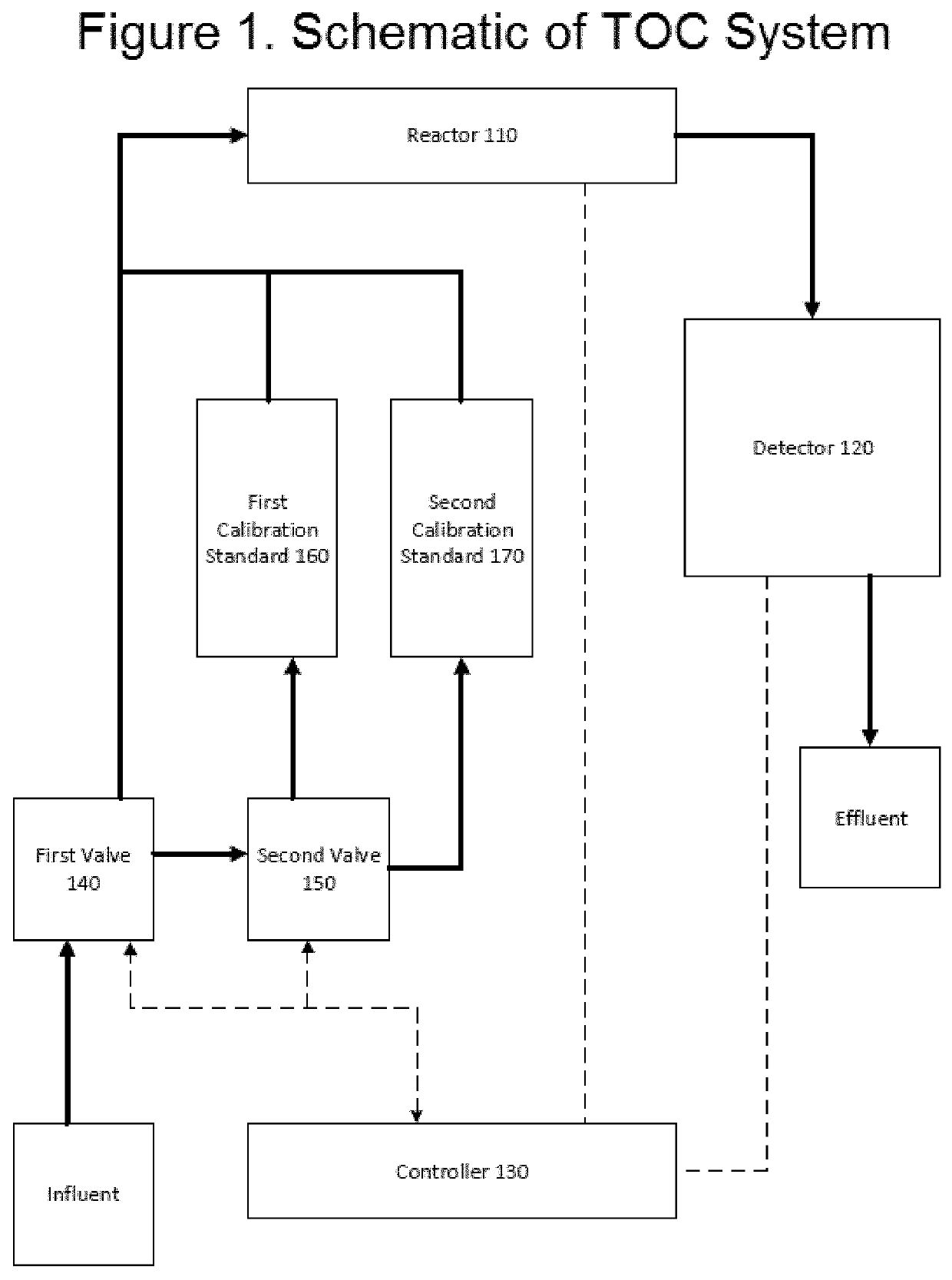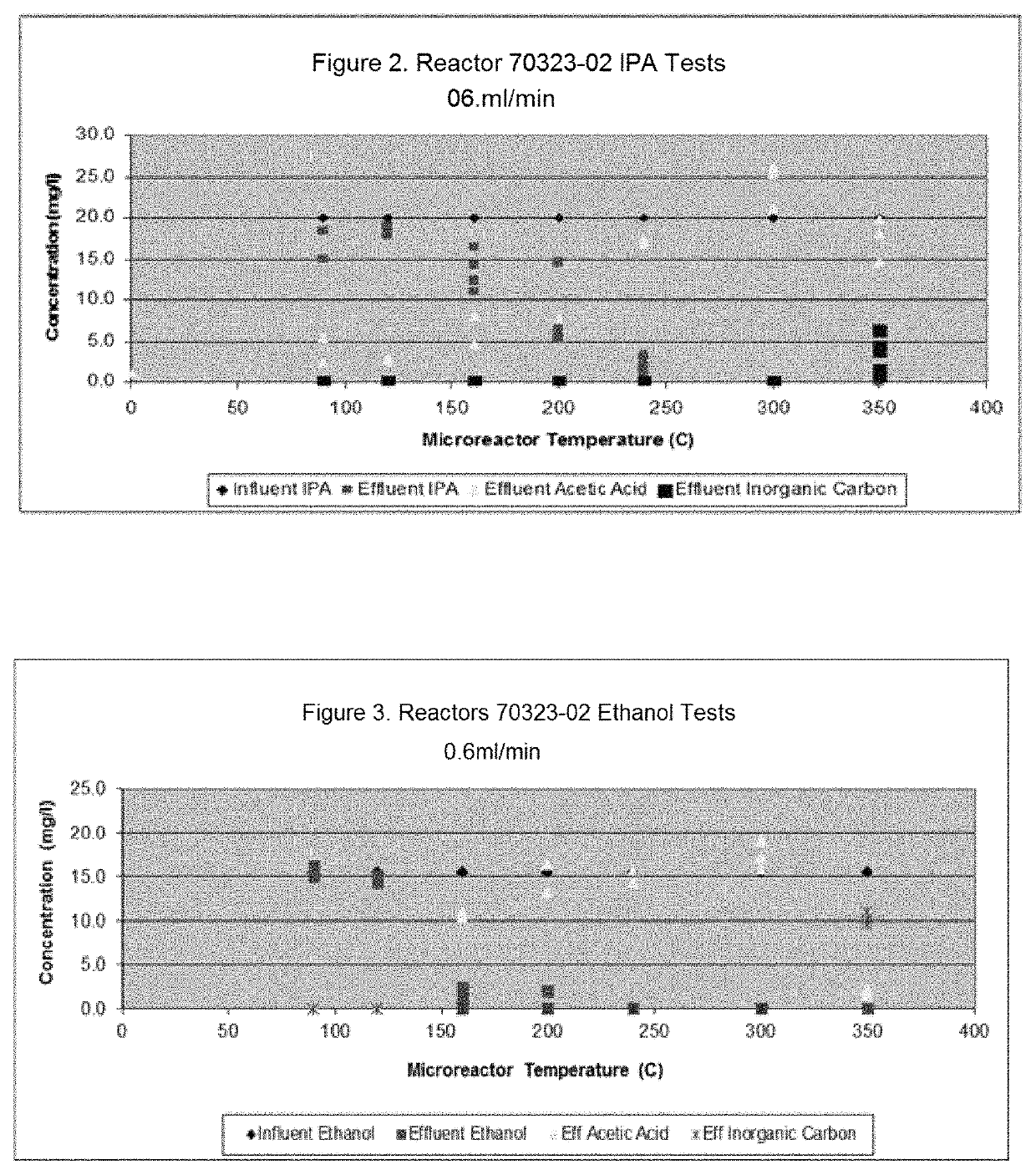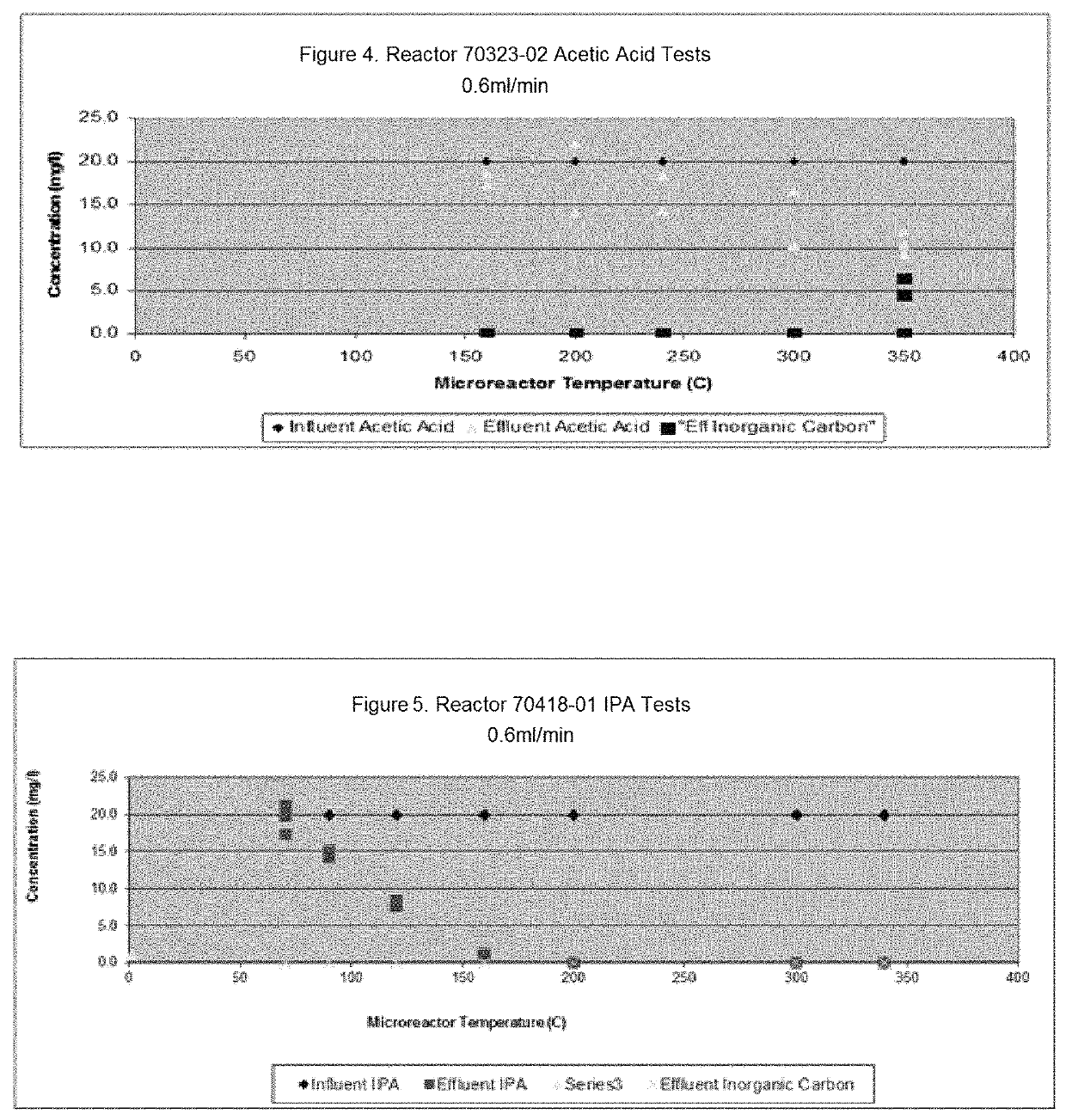Electro-analytical system for monitoring total organic carbon in a water source
a technology of electroanalytical detection and total organic carbon, which is applied in the direction of multi-stage water/sewage treatment, water/sewage treatment by oxidation, material electrochemical variables, etc., can solve the problems of slow oxidation of organic acid to co2 and rate-limiting steps, and achieve simple method, reduce rate-limiting steps, and simplify the effect of toc measurement process
- Summary
- Abstract
- Description
- Claims
- Application Information
AI Technical Summary
Benefits of technology
Problems solved by technology
Method used
Image
Examples
examples
[0034]During development of the disclosed systems and methods, microreactors for selective oxidation of organics to organic acids were fabricated. In an example, two types of reactors were used. Reactor number (70323-02) is based on a nickel 1 / 16″ tube shell with proprietary dopants. Reactor number (70418-01) is based on a metal oxide reactor.
[0035]Eight reactors were previously prepared using two different techniques, chemical vapor deposition and electrolytic deposition. A ten-position parallel test stand was used to perform initial screening of the reactor performance. Based on this initial screening, two reactors were selected and tested for oxidative performance vs temperature.
[0036]The reactors were mounted in the test stand and samples were analyzed by gas chromatography and NDIR to determine conversion rates for binary mixtures of three common organic contaminants, isopropanol (IPA), ethanol, and acetic acid. These three compounds differ in their oxidative performance to suc...
PUM
| Property | Measurement | Unit |
|---|---|---|
| temperature | aaaaa | aaaaa |
| temperature | aaaaa | aaaaa |
| mass | aaaaa | aaaaa |
Abstract
Description
Claims
Application Information
 Login to View More
Login to View More - R&D
- Intellectual Property
- Life Sciences
- Materials
- Tech Scout
- Unparalleled Data Quality
- Higher Quality Content
- 60% Fewer Hallucinations
Browse by: Latest US Patents, China's latest patents, Technical Efficacy Thesaurus, Application Domain, Technology Topic, Popular Technical Reports.
© 2025 PatSnap. All rights reserved.Legal|Privacy policy|Modern Slavery Act Transparency Statement|Sitemap|About US| Contact US: help@patsnap.com



